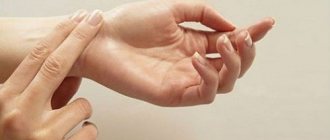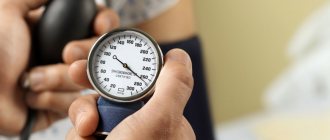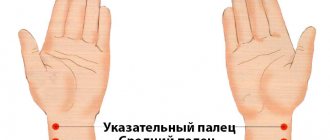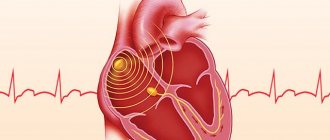Measuring points
Pulsation is determined where the artery passes close to the surface of the body over the bone tissue. Most often, the pulse is measured on the arm. But this is not the only place of measurement.
- on the wrist;
- in the bend of the elbow;
- in the temple area;
- on the neck;
- in the groin;
- under the knee;
- on the legs, or rather, on the ankles on the inside;
- in the pubic region (inguinal arteries);
- in the area of the carotid artery;
- at the junction of the big toe and foot from below.
How to measure pulse on your hand
The easiest place to find the pulse is in the wrist area. To count the pulse on your hand, no special skills or equipment are required. Anyone can measure their heart rate.
The procedure for measuring heart contractions is very simple:
- It is necessary to remove everything from the hand that may interfere with the movement of blood through the vascular system;
- wash your hands and dry them;
- lie down or sit down;
- prepare a watch with a second hand or a stopwatch;
- press the radial artery with three fingers;
- count the number of beats:
- It’s better to do this in a minute, but you can count the beats for 30 seconds, then multiply the result by 2 (If the pulse is calculated in 15 seconds, the result is multiplied by four);
- record the results.
This method of measuring heart rate does not require special skills.
How to determine the pulse on the carotid artery
To perform the procedure for measuring heartbeats in a place close to the carotid artery, two or three fingers are used. They are located on the side of the lower jaw or the sternocleidomastoid muscle near the thyroid cartilage. In this way, the number and force of blows on a person are counted, and some conclusions are made about the character.
Attention! The measurement must be taken carefully to avoid squeezing the artery, which could cause the risk of a sudden slowdown in heart rate. This can lead to loss of consciousness.
How to measure correctly?
The main rule is to do this at the same time of day in the same body position. It is best in the morning, immediately after waking up, without getting out of bed. You need to count the beats within a minute: the “economical” approach to measurement, when counting is carried out for 10, 15, 20 or 30 seconds, and then the result is multiplied, does not give an accurate picture. The reason for this is the unequal heart rate even within 1 minute.
There are different opinions about which area of the body is best to take measurements. Experts agree that the radial artery gives the most accurate readings. Place your thumb just below the first crease on your wrist and listen. To count, use three fingers: hold your hand motionless with your middle and index fingers, and measure with your thumb.
Static loads
Load is not necessarily movement. Staying in one position for a long time can also be a strain on the muscles. If your health does not allow you to practice dynamic loads, you can resort to static ones. They do not require active movement; on the contrary, during the process you must maintain a certain position or change it very slowly (as, for example, in yoga or Pilates). Such loads are indicated even for diseases of the cardiovascular system or musculoskeletal system, which do not allow dynamic activity.
Read also: How to wear boots all year round
In the rhythm of life: how to measure your pulse
In the rhythm of life: how to measure your pulse
Monitoring your pulse helps to identify serious diseases and prevent attacks of heart failure and atrial fibrillation.
pulse, pulse measurement
According to the definition of the medical encyclopedia, pulse (Latin pulsus - blow, push) is periodic fluctuations in the volume of blood vessels associated with contractions of the heart. Pulse readings give a picture of the state of the heart and blood vessels, as well as other organs and systems of the body: the heart, as the main “engine”, reacts to various disturbances by changing the rhythm of its contractions. If you are unwell and have chronic cardiovascular diseases, you should learn to control your pulse.
Benefits of a heart rate monitor
Tonometers and pulse oximeters are medical devices and are convenient to use at home. But many convenient gadgets have been created for people who prefer an active lifestyle. There is even a special device for measuring pulse, which is called a pulsometer.
Basically, devices of this type look like a wristwatch and are used to assess the effectiveness of physical activity by measuring heart rate. In addition to counting your pulse, heart rate monitors perform many useful functions:
- Calculate the average heart rate;
- Determine the maximum values;
- Allows you to set up an individual training zone and notifies you when you go beyond it with an audible signal;
- Equipped with a countdown timer;
- Show date, time, day of the week;
- Works as a stopwatch and alarm clock;
- They are synchronized with special software to transfer data to a phone or computer, where the dynamics can be analyzed.
Many devices provide additional functions, for example, determining the height or number of laps while running, calculating energy consumption, recording the acceleration of the legs, and others. Some models are equipped with a chest belt. The main advantage of heart rate monitors is the most accurate pulse determination, comparable to ECG data.
When is specialist advice needed?
- If deviations in the pulse rate are combined with unpleasant symptoms (beats in the temples, dizziness, heaviness in the back of the head, pain in the eyes, etc.).
- If you have tachycardia: pulse rate is more than 100 beats per minute.
- If you have bradycardia: heart rate less than 50 beats per minute.
- If the pulse is very slow and weak and a person develops a cough and then choking, this indicates heart failure. Urgent medical attention required!
Expert: Galina Filippova, Candidate of Medical Sciences, general practitioner Author: Lyubov Sokolova
The material uses photographs belonging to shutterstock.com
What can cause a high heart rate?
Tachycardia is the medical term for a heart rate of more than 100 beats per minute. [6]. With a high pulse, the heart cannot cope with pumping blood to all systems and organs of the body. This leads to oxygen starvation and the following symptoms:
- shortness of breath;
- discomfort, chest pain;
- fainting.
Tachycardia can be determined in some people only by measuring the pulse and an electrocardiogram. Sometimes it's normal to have a racing heart. Heart rate may increase due to non-cardiac factors such as:
- heat;
- low red blood cell count (anemia);
- excessive use of stimulants, including caffeine;
- stress;
- poor physical fitness.
Sometimes tachycardia is asymptomatic or without complications. But if left untreated, the body's normal functioning can be disrupted, leading to serious complications, including heart failure.
What heart rate is considered normal?
The current general standard for beats per minute readings for healthy people is 60–80. These are numbers for determining your resting heart rate. As a rule, they correspond to the heart rate. Many doctors find it necessary to expand this range by adding 10 units to the extreme values. That is, define as the norm indicators from 50 to 90 beats per minute. This scatter is explained by physiological differences between people and the characteristics of the heart and blood vessels in different age groups. In addition, normal heart rate depends on lifestyle. For athletes and simply physically active people, it is slightly higher than for habitually calm people. Women's indicators also differ upward.
The pulse rate invariably increases during physical activity, acute stress, and nervous tension. This is a normal reaction of the body. When activity and exposure to external factors decrease, the heart gradually normalizes contractions. For healthy people, the period of return to normal heart rate is no more than 10 minutes. In the presence of pathologies, especially endocrine or cardiovascular ones, increased pulsation persists longer. Unreasonable disturbances in a state of rest should cause severe anxiety. The periodic appearance of bradycardia, tachycardia and other disorders may be the primary sign of ischemia, hypoxia, intoxication and other dangerous conditions.
In pregnant women, the pulse rate is closer to the upper limit: 80–90 beats. This is explained by the pressure of the growing uterus on the diaphragm and changes in hormonal levels. Overweight people also experience increased heart rate. And obesity often provokes the development of tachycardia due to the high load of body weight on the blood vessels and heart.
Children have different heart rates than adults. In infants, it reaches 140 beats per minute, gradually decreasing as the body develops. By the age of 6, the heart of preschoolers beats with a force of 100 beats, and by approximately 16 years it reaches the level of adults.
General heart rate norms by age:
- first month of life: 110–140;
- up to 1 year: 100–130;
- up to 2 years: 95–120;
- in children 3–8 years old: 93–110;
- from 9 to 12 years: 65–100;
- from 13 to 16 years: 60–95;
- from 17 to 20 years: 60–90;
- from 21 to 40 years: 60–90;
- from 40 years old: 60–85.
The given indicators are reliable for a state of rest. In women and men, the average heart rate differs slightly. They are more influenced by the individual characteristics and lifestyle of people.
Diagnostics by pulse
During the ruling Chinese dynasty, pulse diagnosis was widely used to determine the condition of a monarch. The doctors could touch them only to measure his pulse. An incorrect diagnosis cost the healer his life. And they counted the frequency, uniformity and strength of the monarch’s heart contractions. They were diagnosed.
For diagnosis by heart contractions, the frequency of beats, their strength, and fullness are still taken into account. For example, place three fingers of the right hand in the place of the left wrist, where the radial artery is located, so that the heart contractions are felt by each finger. They remember under which finger the blows are felt more strongly. The same is done with the left hand.
If, when pressed in the left wrist, the heart beats under the pad of the index finger, this is a signal of a disease of the small intestine in a man, and a disease of the large intestine in a woman. The depth of the beats under the same finger indicates the condition of the heart in men or lungs in women.
Deep palpitations in the wrist of the right hand indicate pathologies of the lungs in men and heart pathologies in women. Similarly, superficial heartbeats indicate pathologies in the intestines, but, on the contrary, from pathologies of the left hand.
It is impossible to accurately measure blood pressure using heart rate readings alone, but you can find out whether your blood pressure is high or low. It disappears for a few seconds, and then the pulse appears again due to arrhythmia. With osteochondrosis, the frequency of impacts on different hands is different.
Where is the best place to measure?
You can feel the pulse anywhere where there is no fat and muscle tissue. Most often, heartbeats are checked in the neck, where the carotid artery is located close to the skin. But sometimes difficulties arise in measuring indicators in this area of the body. Then they resort to checking:
- Brachial artery. It is located in the elbow area.
- Arch of the foot. You can feel the pulsation in the hole in the center of the foot.
- Popliteal fossa.
- Femoral artery. It is located in the inner thigh in the groin area.
Regardless of the location of the measurements, all actions are performed according to the same algorithm.
Methods for measuring pulse
By following all the rules, you can take measurements on any part of the body where large arteries are located close to the surface. It is easiest to feel the pulsation in the area of the radial artery at the bottom of the arm. In this case, blood flow is observed from the side of the sore finger. Doctors consider this point the best option for determining indicators.
The index, middle and ring fingers are used to measure heart rate. A vein should be found on the left wrist. This is not difficult to do, since it is presented in the form of a thin blue stripe.
Fingers are placed on the hand under different pressures. The index finger is placed on the surface of the skin, and the middle finger is pressed against the muscle tissue.
Why measure your pulse?
By determining how many times the heart contracts per minute, you can understand how well the organ performs its functions. The pulse is a reflection of the rhythmic oscillations of blood vessels under the influence of heart contractions.
In adults, there should be no more than 80 and no less than 60 beats per minute. If a person is professionally involved in sports, then the indicators may be lower, in the range of 40-60 contractions, which is associated with the training of the heart and its habit of functioning in a compensatory mode.
Rules for measuring pulse
To obtain accurate information about the heart rate, you need to avoid the influence of factors that increase or decrease the rate. The procedure should not be performed if:
- the person is emotionally overexcited;
- took a hot bath before or after swimming in the pool;
- immediately after sports, increased physical activity;
- a large amount of food was consumed or the person did not eat for a long time.
Under the influence of these factors, the frequency of contractions changes, and the result obtained will not be accurate.
It is also important to remember that your heart rate slows down before going to bed and after waking up. Therefore, it is better to measure your pulse a few hours after sleep. It is advisable to do this in the morning, while in a horizontal position, since sitting and standing the results will be completely different.
The patient should be comfortable emotionally and physically. The heart rate changes all the time.
Therefore, reliable information about the functioning of the cardiovascular system can be obtained by measuring your pulse every day at the same time during the week.











